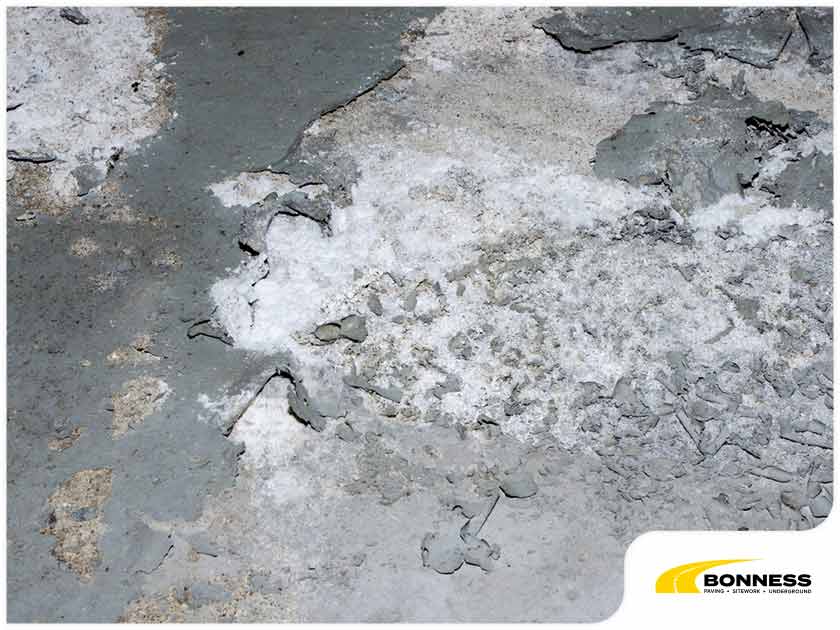
White stain is one of the most troublesome cosmetic defects on masonry. The French have a word for it is efflorescence, which means “to flower out.”
This is a reaction to when the masonry surface meets moisture. When the water dries, it can leave behind salt, and the deposits are an eyesore.
Although the efflorescence effect is naturally occurring, it doesn’t mean you have to live with it. There are ways to reduce its likelihood of happening in the first place and address it when it manifests itself.
The best way to avoid efflorescence is to not go with concrete in the first place. But if you like masonry for your hardscaping, follow these practical tips to prevent salt deposits from ruining the character of your property.
Add Class-F Fly Ash to the Mix
All concrete has calcium hydroxide, which can trigger efflorescence. Despite being inevitable, you can lock up a significant amount of this compound with Class-F fly ash. The use of metakaolin can work, too.
Apply a Sealer
Sealing and coating the surface of concrete is an effective way to minimize water penetration. Doing so may not completely keep slabs dry, but it accomplishes half of the job.
Use a Vapor Barrier
Water doesn’t only come from the surface. It could also originate from the earth, so it’s imperative to install a vapor barrier.
Ensure Proper Drainage
The poorer your drainage system is, the higher the chances of your concrete will get soaked. Make sure you have the necessary infrastructure to channel the water away from your property’s masonry surfaces.
Act Immediately
If efflorescence still develops in spite of all of the necessary precautions you’ve taken, you should get it washed as soon as possible. The more you put it off, the harder it is to clean. You wouldn’t want to resort to harsh solutions as much as possible.
Bonness Inc. is the local authority on all things concrete. If you want to prevent or remove the white stains on your masonry surfaces, call (239) 597-6221 to talk about your needs and get an estimate!
